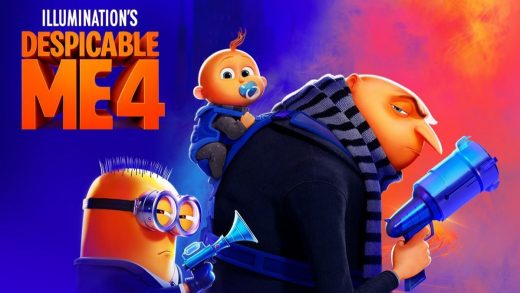:format(webp)/https://www.thestar.com/content/dam/thestar/entertainment/books/2023/01/26/5-new-books-for-young-readers-sure-to-entertain-and-educate/nell_plants_a_tree_book_cover.jpg)
“Nell Plants a Tree,” written by Anne Wynter, illustrated by Daniel Miyares (Balzer & Bray, 32 pages, ages four-nine)
Spring is a distant prospect, but this poetic, kinetic tale of a tree’s growth takes the long view on time and is a good mid-winter read-aloud. “Before a grip on a branch and a fall to the ground and a scrape and a leap and a reach for the top … Nell picks up a seed …” Wynter alternates the rambunctious (and delicious) possibilities of a mature tree with the moments in the past when a little girl plants a seed, nurtures it and, decades later, harvests its nuts. Care, growth and abundance for the future — in both tree and family — make this a vital, timely book.
“Just Jerry: How Drawing Shaped My Life,” written and illustrated by Jerry Pinkney (Little Brown, $22.99, 147 pages, ages nine-12)
The late Jerry Pinkney illustrated many picture books: this is his account of his beginnings — growing up on an all-Black block in Philadelphia, horsing around, building things, exploring the woods, struggling with dyslexia, a sense of failure and the effects of racism, and passionately drawing, drawing, drawing. Emotionally eventful rather than dramatic, Pinkney’s steady, sure-footed account has a warmth and sense of candour that is compelling — for kids who struggle with reading, but also an encouragement for artists of all sorts. Generously illustrated with Pinkney’s rough drawings and designed with font, colour and line-lengths to accommodate dyslexic readers.
“Simon Sort of Says,” by Erin Bow (Scholastic, $21.99, 320 pages, ages 10-14)
When Simon, his undertaker mum and Catholic deacon dad move to an American town where the internet is banned — a site where radio telescopes receive signals from space — they hope for a quiet life. But Simon’s dad encounters the “Jesus Squirrel,” his mom’s hearse driver loses a body and the media descend. The survivor of a school shooting, Simon suffers from PTSD, especially in relation to the media. When a friend proposes they fake a radio signal from space, Simon thinks it will distract journalists from hounding him. Bow cloaks a story of very real, tragic anxiety in a compassionate, funny, inventive tangle of characters, wacky incidents and physics. With a quick wit and imaginative exuberance, she offers a tale that’s heartwarming, comic and quite unpredictable.
“The Everlasting Road,” by Wab Kinew (Tundra, 255 pages, $23.99, ages 10 and up)
This second volume in Kinew’s videogame-based, sci-fi fantasy finds Anishinaabe gamer Bugz mourning Waawaate, her brother who died of cancer, by recreating him as a bot in her virtual world. But Waawaate-bot is soon out control, destroying not just the Floraverse but affecting gamers themselves. As in the earlier “Walking in Two Worlds,” Kinew provides plenty of virtual worldly action; here, to good effect, he balances the story more toward Bugz’s real community and culture: the wisdom of the elders, sharing food and ceremony, and the joy of traditional dance and song. Mingled with this is consideration of Bugz’s sweetheart, an Uyghur refugee from China.
“Bomb Graphic Novel: the Race to Build — and Steal — the World’s Most Dangerous Weapon,” written by Steve Sheinkin, illustrated by Nick Bertozzi (Roaring Brook, 272 pages, $23.99, ages 10 and up)
Sheinkin’s earlier “Bomb” has become an eminently readable, equally thoughtful work in this graphic novel adaptation. Sheinkin and Bertozzi frame the account with the interrogation of the spy Harry Gold, who fed information on the bomb to Russia. Between sequences showing Gold’s confession, Sheinkin provides the back story of development and deployment, concluding with the followup (or fallout) for many of the story’s main actors. “Today, there are about 13,000 nuclear weapons in the world — down from nearly 70,000 in the 1980s … How does this story end?” he asks. “We don’t know — because it’s still going on. And, like it or not, you’re in it.” Sheinkin makes clear that the intricacies of the physics involved in the bomb’s design pale beside the moral and consequential complexities it has on and in the world.
JOIN THE CONVERSATION
:format(webp)/https://www.thestar.com/content/dam/thestar/entertainment/books/2023/01/26/5-new-books-for-young-readers-sure-to-entertain-and-educate/just_jerry_book_cover.jpg)
:format(webp)/https://www.thestar.com/content/dam/thestar/entertainment/books/2023/01/26/5-new-books-for-young-readers-sure-to-entertain-and-educate/simon_sort_of_says.jpg)
:format(webp)/https://www.thestar.com/content/dam/thestar/entertainment/books/2023/01/26/5-new-books-for-young-readers-sure-to-entertain-and-educate/the_everlasting_road_book_cover.jpg)
:format(webp)/https://www.thestar.com/content/dam/thestar/entertainment/books/2023/01/26/5-new-books-for-young-readers-sure-to-entertain-and-educate/bomb_graphic_novel.jpg)



